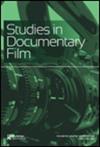R.L.克罗克和南澳大利亚古荒原
IF 0.8
4区 综合性期刊
Q3 MULTIDISCIPLINARY SCIENCES
Transactions of the Royal Society of South Australia
Pub Date : 2018-07-03
DOI:10.1080/03721426.2018.1490071
引用次数: 2
摘要
罗伯特·兰登·克罗克是第一个研究沙漠沙丘的科学家,这些沙丘现在已经被植被和遗迹稳定下来,延伸到南澳大利亚南部的大部分地区。虽然他考虑了它们的起源,但他特别关注它们的年龄,因此它们对气候变化的意义。由于当时没有适合沙丘砂的物理测年方法,他只能依靠地层学和风化程度等主观标准。因此,他的大多数估计都是错误的数量级,但他把注意力集中在造成地理上分开的沙丘地带的事件年表上。后来的研究表明,正如克罗克推测的那样,这些领域有一个共同的年代。以至于有人提出,它们可以合理地以他的名字命名,他首先发现了它们的共同特征,并提出了它们何时形成、何时稳定以及气候何时发生变化的问题。本文章由计算机程序翻译,如有差异,请以英文原文为准。
R.L. Crocker and the South Australian palaeodunefields
ABSTRACT Robert Langdon Crocker was the first scientist to investigate the separate fields of desert dunes that, now stabilised by vegetation and relic, extend over much of southern South Australia. Though he considered their origin, he was particularly concerned with their age or ages, and hence their significance for climatic change. As no physical dating methods appropriate to dune sand were then available, he perforce relied on stratigraphy and subjective criteria such as degree of weathering. Consequently, most of his estimates were of the wrong order of magnitude, but he focused attention on the chronology of events responsible for the geographically separate dunefields. Later work has shown that, as Crocker surmised, the fields share a common chronology. So much so that it is proposed that they could justifiably be named after he who first recognised their common characteristics and raised the questions of when they formed, when they were stabilised, and thus when climate had changed.
求助全文
通过发布文献求助,成功后即可免费获取论文全文。
去求助
来源期刊
CiteScore
1.40
自引率
12.50%
发文量
17
审稿时长
>12 weeks
期刊介绍:
Published since 1880, the Transactions of the Royal Society of South Australia is a multidisciplinary journal that aims to publish high quality, peer-reviewed papers of particular relevance to Australasia.
There is a particular focus on natural history topics such as: botany, zoology, geology, geomorphology, palaeontology, meteorology, geophysics, biophysics, soil science and environmental science, and environmental health. However, the journal is not restricted to these fields, with papers concerning epidemiology, ethnology, anthropology, linguistics, and the history of science and exploration also welcomed.
Submissions are welcome from all authors, and membership of the Royal Society of South Australia is not required.
The following types of manuscripts are welcome: Reviews, Original Research Papers, History of Science and Exploration, Brief Communications, Obituaries.

 求助内容:
求助内容: 应助结果提醒方式:
应助结果提醒方式:


